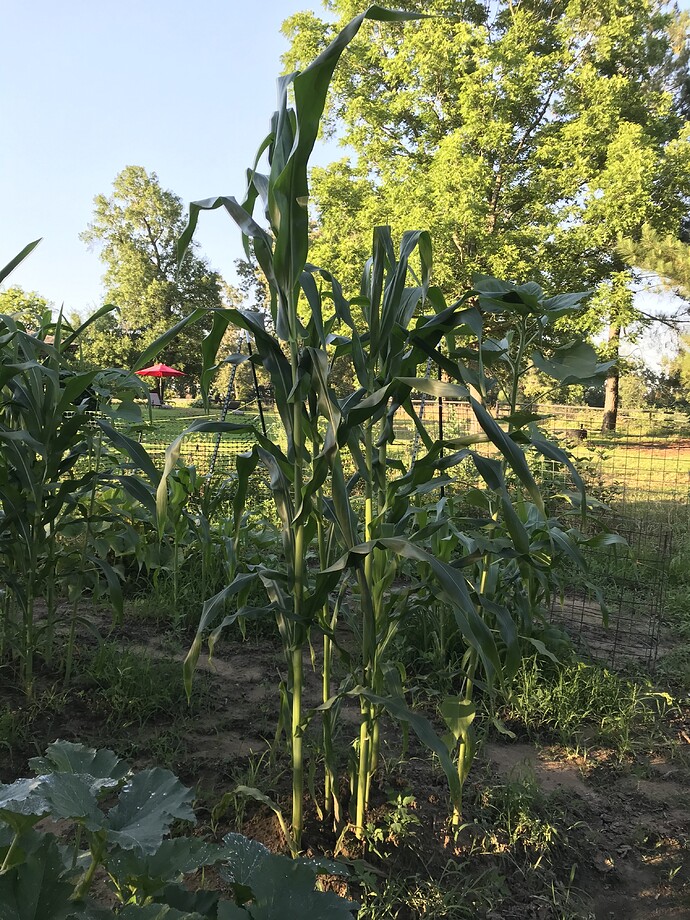All
I’m going to experiment with different corn planting arrangements this year
Rows don’t do well for me. Wind blows them over. Other issues. Last year I did a 5 foot by 5 foot stand. Did real well
This year I’m thinking of doing hills of 4 to 10 plants in clumps. I can put a stake in the middle to support for wind also an advantage
Any experience or suggestions on using hills for corn instead of rows???
1 Like
Corn will always lodge (blow over) if it is not mounded up with dirt when about a foot tall. My rule of thumb is that the mound of dirt should be at least 8 inches high. When properly mounded, there is very little blowing over even with high winds, however it is possible for stalks to be broken off at the soil line.
You can grow corn in clumps of up to 15 plants, however, only 2 or 3 of them will usually make a decent ear of corn. If you give this a try, stay with 4 or 5 plants per hill. Hills should be about 4 feet apart and if you choose to plant pumpkins, every third hill in every third row should be planted with 4 or 5 pumpkin seed.
4 Likes
The main thing is plant the seed at a uniform two inch depth and space the seeds at least four inch but preferably more apart. Planting even two seeds together causes plants to become weeds. Skips in spacing are better than doubles because ears can flex. If seeds are planted shallow brace roots can’t do their job. Falling corn is partly variety dependent. Most modern varieties will have enough lignin in the stalks to stand well. Weak stalked plants need to be spaced further apart , not closer.
With research you can find the charachteristics and ratings for varieties. They are rated on standability, stay green , dry down, plant health, etc. Look for high scores on staygreen ,standability and plant health. With proper selection of seed planted at the correct depth, millions of acres are successfully grown without mounding dirt around the plants.
1 Like
Agree with your thought, but most who read here are growing sweet corn and most sweet corn does not have very strong brace roots so is susceptible to lodging.
Cherokee Squaw is the only open pollinated field corn I’ve grown that has very strong brace roots and can be grown without mounding. I have not grown any open pollinated sweet corn that did not need mounding.
4 Likes
Ambrosia sweet corn… I plant in rows 32 inch spacing… hilled and fertilized 3 times (as shown on hoss tools video’s on youtube)… worked great… full ears… nasty late summer storms and none blew over.
TNHunter
4 Likes
Little more info…
Where the guys on Hoss Tools use a chemical fertilizer… I used blood meal for the side dressing.
I just worked up the area between the rows with my scuttle hoe, side dressed with blood meal, and then used a shovel to pull the loose dirt from the space between the rows, up to the base of the corn plants. Burying those roots a little deeper each time.
They were done about the end of July and I pulled them, and composted and put in a second crop of green beans and okra.
When I pulled those corn plants up, there were roots at 3 levels… so each time I hilled them a little deeper, they sent out more roots.
This was the first year in several years that I had NONE blown over.
TNHunter
3 Likes






